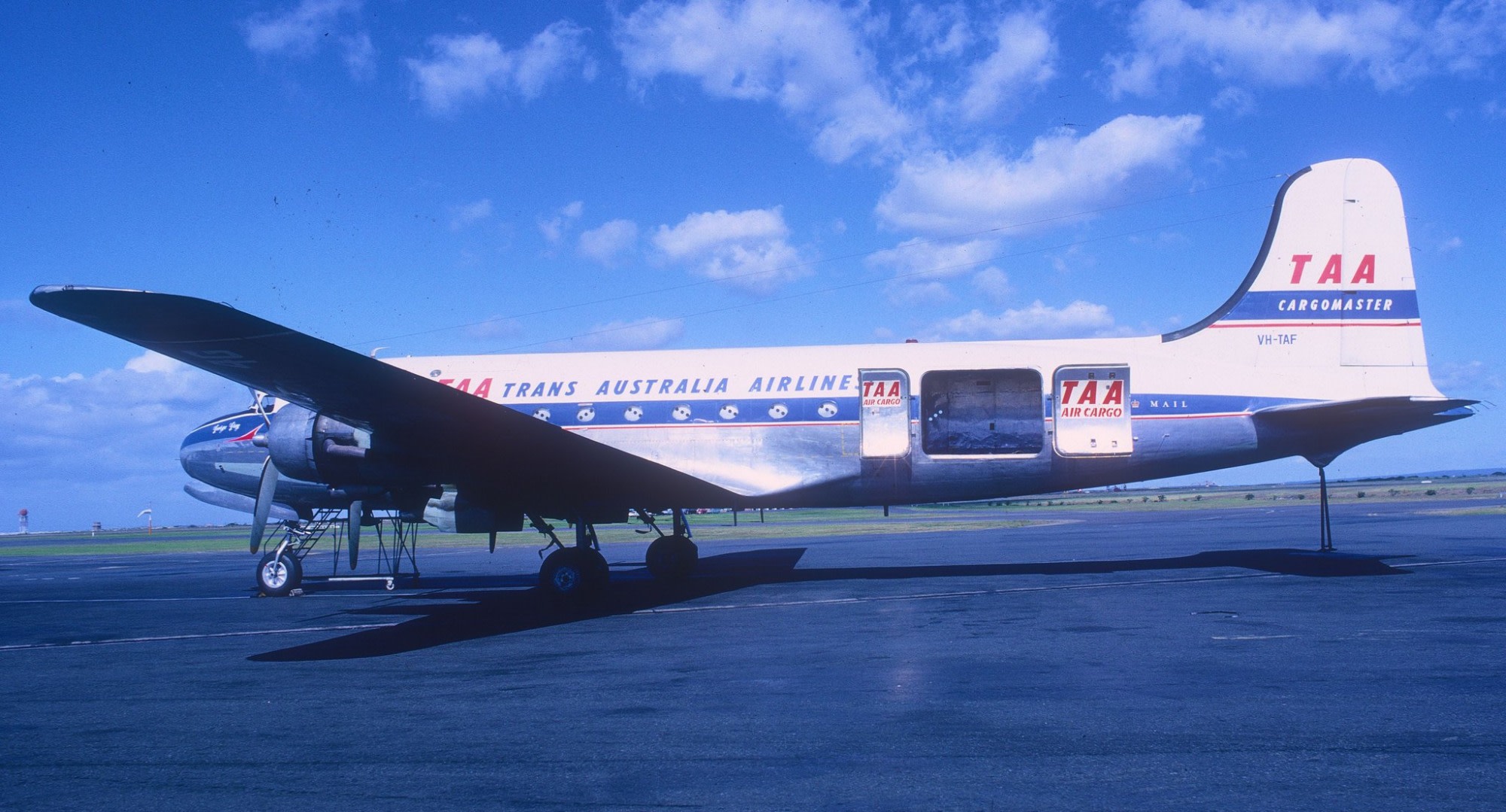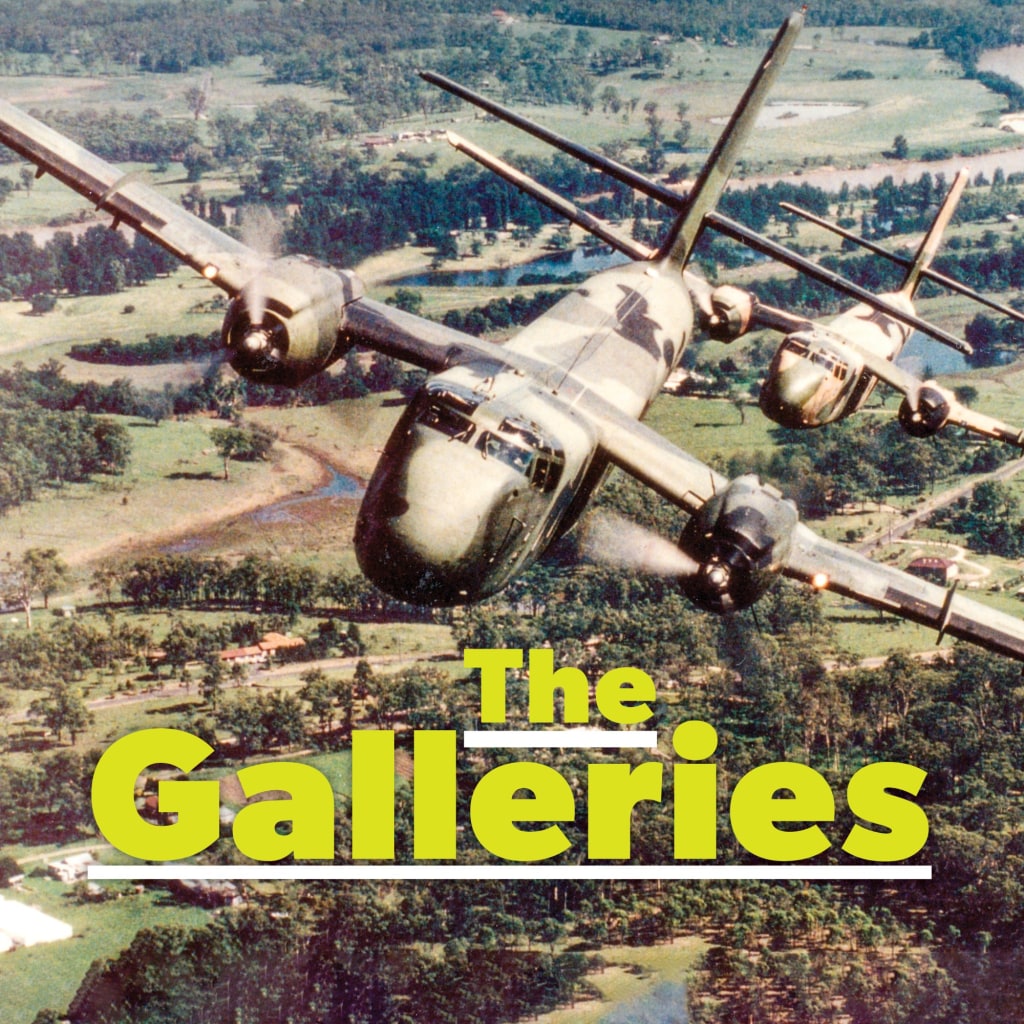
TAA former C-54A-5-DO VH-TAF ‘George Grey’ at Mascot on April 30 1968. Modified with large side loading doors, this aircraft, similar to other remaining domestic DC-4s, served out its days as a freighter, named Cargomaster by both TAA and Ansett-ANA.
Post-war pioneer
How the DC-4 opened up the nation and more
It was sold overseas in 1969 becoming N1220V at Flying Tiger Line. ERIC ALLEN
B efore World War II, Pan American’s large flying boats, the Boeing 314 Clippers, operated long-range flights – mainly across the North Pacific – to limited Pacific destinations. Services also reached as far south as New Zealand, but not Australia.
The evolution of land-based airliners changed everything. One leader in developments was the Douglas Aircraft Company. Its 42-seat DC-4E (E for experimental), an aircraft with double the DC-3’s capacity, first flew on June 7 1938. The aircraft was complex, uneconomic and prone to maintenance issues. In 1939 it was sold to the Mitsui Trading Company in Japan, in the belief it would go to Greater Japan Air Lines. Subterfuge was revealed with the aircraft secretly handed to the Nakajima Aircraft Company and dismantled at the request of the Japanese Navy. This knowledge was used in the design of the unsuccessful Nakajima G5N1/G5N2 Shinzan four-engined long-range bomber.
This content is available exclusively to Australian Aviation members.
Subscribe to Australian Aviation for unlimited access to exclusive content and past magazines.A monthly membership is only $5.99 or save with our annual plans.
- Australian Aviation quarterly print & digital magazines
- Access to In Focus reports every month on our website
- Unlimited access to all Australian Aviation digital content
- Access to the Australian Aviation app
- Australian Aviation quarterly print & digital magazines
- Access to In Focus reports every month on our website
- Access to our Behind the Lens photo galleries and other exclusive content
- Daily news updates via our email bulletin
- Unlimited access to all Australian Aviation digital content
- Access to the Australian Aviation app
- Australian Aviation quarterly print & digital magazines
- Access to In Focus reports every month on our website
- Access to our Behind the Lens photo galleries and other exclusive content
- Daily news updates via our email bulletin












